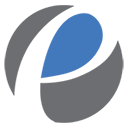ECTS:
6
Περίγραμμα Μαθήματος

e-Class
Σκοπός του μαθήματος είναι η παρουσίαση των θεμάτων που αφορούν τα χρηματοπιστωτικά ιδρύματα και τη χρηματοοικονομική. Μέσα από αυτό αναλύονται τα περιουσιακά στοιχεία που οι επενδυτές μπορούν να χρησιμοποιήσουν προκειμένου να πετύχουν τον στόχο τους. Αυτά είναι τα ομόλογα, οι μετοχές και τα παράγωγα χρηματοοικονομικά προϊόντα, ενώ δίδεται έμφαση στην αποτίμησή τους. Μελετάται ο καθορισμός, η συμπεριφορά και διάρθρωση των επιτοκίων και η επίδρασή τους στην αξία των περιουσιακών στοιχείων που εξετάζονται. Ταυτόχρονα όμως αναλύεται και η χρήση τους ως μέσα χρηματοδότησης από τους ενδιαφερόμενους φορείς (εταιρίες, οργανισμούς, κ.λπ.). Στη συνέχεια παρουσιάζονται στοιχεία θεωρίας χαρτοφυλακίου και διαχείρισης χαρτοφυλακίου ώστε να εξηγηθεί πως μπορούν τα προηγούμενα περιουσιακά στοιχεία να συνδυαστούν. Τέλος, μελετώνται τα χρηματοπιστωτικά ιδρύματα και συστήματα, ο ρόλος των τραπεζών και η προσφορά χρήματος.
| Όνομα | Τίτλος | |
|---|---|---|
| Πουφινάς Θωμάς | Αναπληρωτής Καθηγητής | tpoufina@econ.duth.gr |

